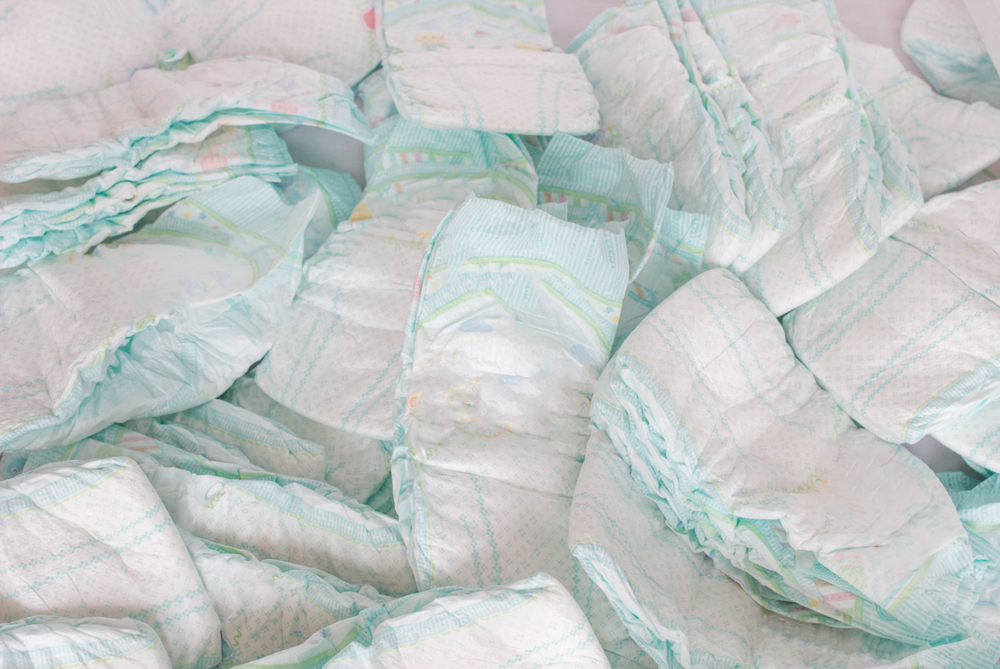Access to affordable housing is a basic human right, yet it remains a major concern, especially in low-income countries. The cost of building materials, which can account for up to 80 percent of total construction costs, frequently stymies development. Despite the fact that other materials such as natural fibers and industrial waste have been investigated, concrete remains the preferred material due to its strength and durability, despite its considerable carbon footprint. Researchers at the University of Kitakyushu in Japan have developed an amazing solution that is both environmentally friendly and cost-effective: used disposable diapers.
Finding low-cost, sustainable building materials for a greener world
As the world’s population continues to grow, so does the demand for low-cost housing. Unfortunately, this leads to an increase in garbage generation, as shown in Indonesia, where total waste production in 2020 reached 32.76 million tons. In the middle of this difficulty, disposable diapers have become a serious environmental concern, with Indonesia ranked sixth in the world in terms of their use. Inadequate disposal of dirty diapers leads to pollution by allowing chemicals and microplastics to enter the country’s rivers and waterways. Researchers at the University of Kitakyushu have seen the potential of reusing disposable diapers to address both environmental pollution and the demand for affordable construction materials.
The researchers began a project to find a solution to make concrete more eco-friendly and cost-effective. They constructed concrete and mortar samples by combining cleaned, dried, and shredded used disposable diapers with cement, sand, gravel, and water. After curing these samples for 28 days, the researchers put them through pressure tests until they shattered. They calculated the greatest proportion of sand that could be replaced with diaper waste when constructing various components of a house.
Using waste as a foundation for sustainably constructed homes
Their discoveries were astounding. They could replace 10 percent of the sand in a three-story house using diaper waste for columns and beams. This share grew to 27 percent for a single-story dwelling. When it came to partition walls, diaper waste might replace up to 40 percent of the sand. In the case of floors and garden paving, nine percent of the sand might be replaced. It should be noted that exceeding these proportions rendered the concrete unfit for construction.
In summary, the researchers estimated that disposable diaper waste may replace up to eight percent of the sand used in all concrete and mortar constructions for a single-story house with a 36-square-meter floor plan. This amounts to about 60 cubic feet (1.7 cubic meters) of garbage, indicating a huge opportunity for reusing and repurposing non-biodegradable materials.
The consequences of this study go far beyond Indonesia. Disposable diapers are one of the most significant contributors to global landfill waste, with over 18 billion thrown each year. The researchers have opened up options for tackling environmental challenges and delivering cheap housing around the world by establishing the practicality of using discarded diapers as a construction material.
The researchers acknowledge the new solution’s present limitations. Collecting and sanitizing old diapers would necessitate partnership with waste treatment facilities, as well as large-scale shredding machines. Despite these obstacles, the study highlights the potential of employing non-biodegradable garbage as a building material, providing a glimmer of hope in establishing sustainable construction methods and making housing more accessible to all.
Finally, the researchers have established the groundwork for a brighter future by converting diapers into composite building materials. This study demonstrates the potential for repurposing trash, encouraging environmental responsibility, and transforming the building business.
Source study: Scientific Reports— Application of non-degradable waste as building material for low-cost housing











